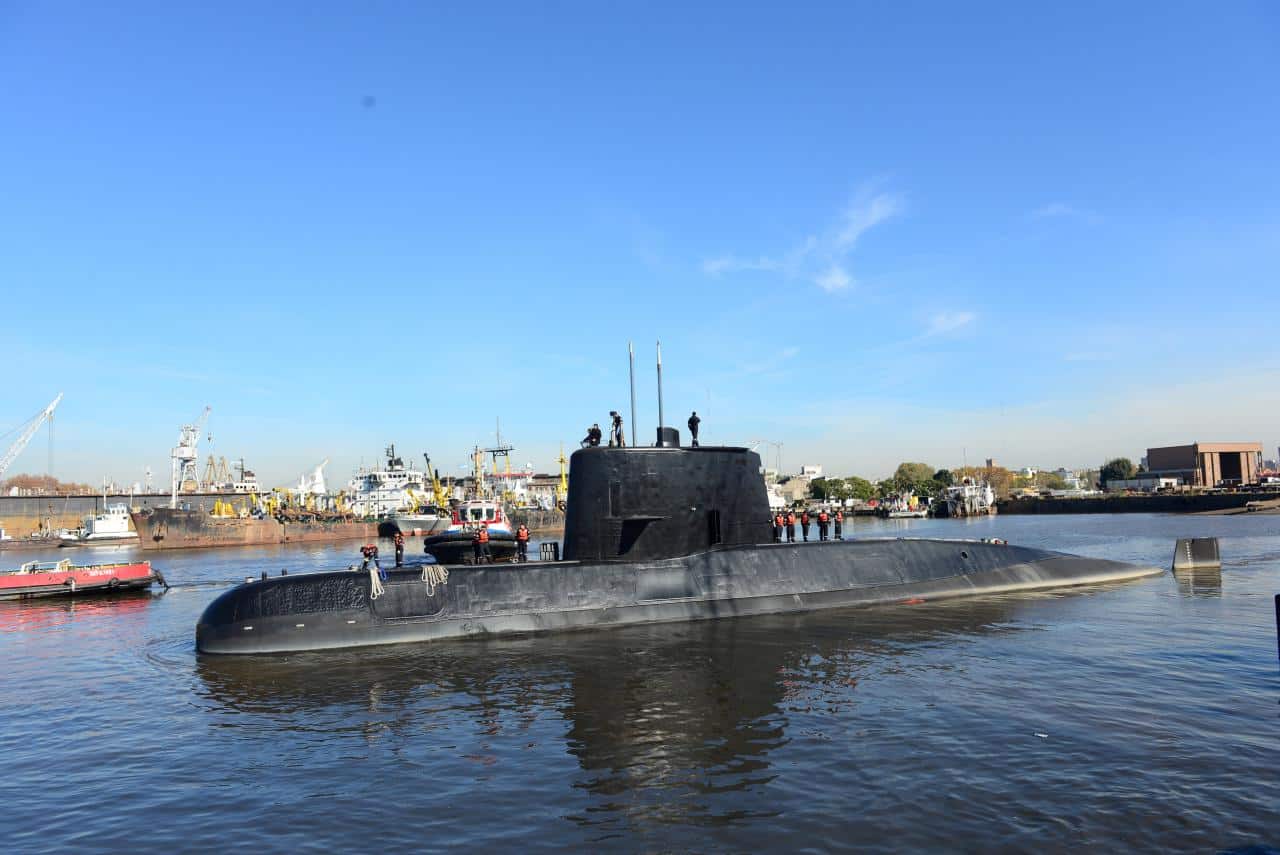Experts ruled out Monday (Nov 20) the possibility that noise detected at sea could have come from an Argentine submarine missing with 44 people aboard, in the latest bad news to hit their relatives.
“The sound footprint could not correspond to a sub’s … it may have been a noise from a living thing,” said navy spokesman Enrique Balbi.
“The search continues,” he added, noting that there are 14 vessels and 10 aircraft scouring area 24 hours a day in the midst of a storm front in the South Atlantic that is expected to ease on Tuesday.
News that noises had been detected had raised hopes to find alive the 44 crew members aboard the ARA San Juan, missing for five days in the South Atlantic – after earlier apparent distress calls were dismissed as not coming from the vessel.
Argentina will still dispatch vessels with multi-beam undersea probes to explore the site where the noises were detected, some 360km offshore in shallow waters at the edge of Argentina’s continental shelf that were on the sub’s course, Balbi said.
The noises sounded like tools being banged on the hull of a submarine to attract the attention of rescuers, CNN reported, citing an unnamed senior US navy official familiar with the international search effort.
A US Navy P-8A Poseidon plane was immediately dispatched to the site where the noises were detected by two Argentine ships. The plane dropped sonar buoys into the sea to record the noises.
A multinational air and sea search is under way with help from seven countries including Brazil, Britain, Chile, the United States and Uruguay.
“BREAKDOWN”
Earlier in the day, the navy said the German-built TR-1700class diesel-electric submarine launched in 1983 had reported a mechanical breakdown in its final communication Wednesday.
The nature of the breakdown was not immediately clear. It was the first time the navy indicated it had been aware of a problem.
“The vessel surfaced and it reported a breakdown. It was therefore asked to change course and go to Mar del Plata,” said Gabriel Galeazzi, the head of the naval base in the city, located 400km south of Buenos Aires.
Balbi also told reporters that analysis has shown that seven signals received by naval bases over the weekend were not attempted distress calls from the submarine’s satellite phone.
FALSE HOPE?
Monday’s revelations were a blow to relatives of sailors aboard the sub, around 100 of whom are being housed at the Mar del Plata naval base as they await news of the crew.
“They have a lot of hope. The hours go by and the worry rate goes up. The best tranquilizer is accurate information,” said Enrique Stein, a member of a psychological support unit set up for the families.
Andrea Ali, wife of Franco Ali, an electrician aboard the San Juan, added: “We don’t know anything. We are waiting with a great deal of anxiety.”
The submarine’s fate has gripped the nation, and President Mauricio Macri visited the relatives and prayed with them.
Macri was briefed on the search during his visit to the base.
MULTINATIONAL RESCUE EFFORTS
Search efforts have been hampered by inclement weather, including a powerful storm that has whipped up waves reaching seven meters in height.
Rescuers are focusing on an ocean patch about 300km in diameter, radiating from the last point of contact.
US Southern Command has deployed the Poseidon patrol and reconnaissance plane with a crew of 21, as well as a NASA P-3 research aircraft, and other equipment and personnel.
The US Navy has deployed two unmanned underwater vehicles that use a sonar system to create an image of large sections of the sea floor.
Britain’s Royal Navy said it had sent the HMS Protector, an Antarctic patrol ship.
The submarine had been returning from a routine mission to Ushuaia, near the southernmost tip of South America, to Mar del Plata.
It is one of three submarines in the Argentine fleet.
Sixty-five meters long and seven meters wide, it was built by Germany’s Thyssen Nordseewerke and launched more than three decades ago.
It underwent a refit between 2007 and 2014 to extend its use by about 30 years.










